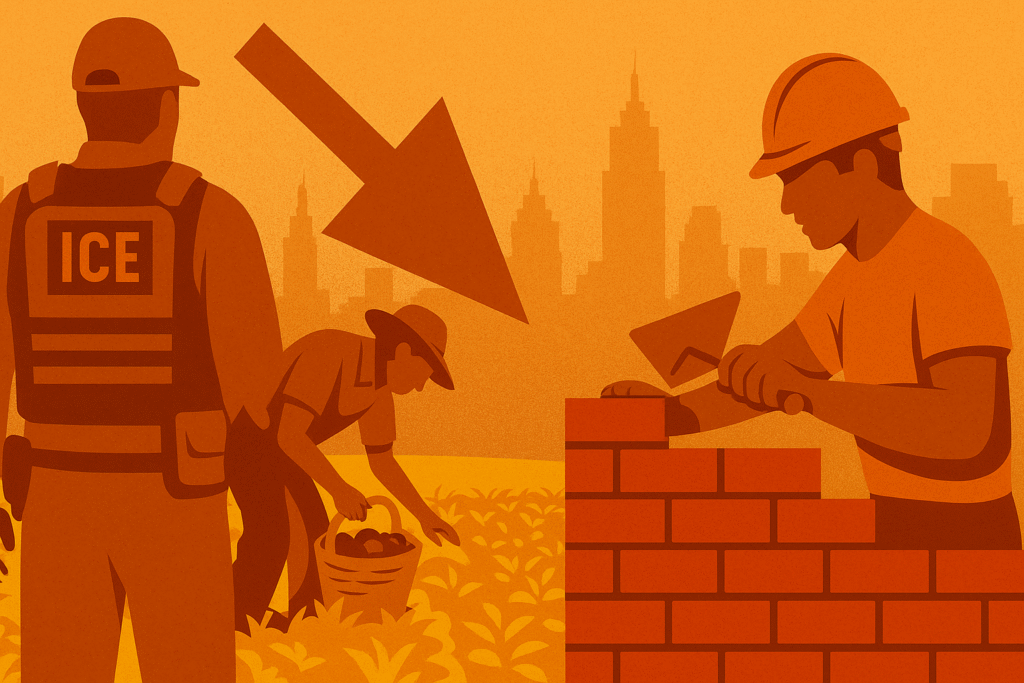The July U.S. jobs report, due Friday, is expected to highlight the growing impact of the Trump administration’s immigration crackdown on an already cooling labor market.
According to economists surveyed by Bloomberg, the Labor Department will likely report a gain of 109,000 jobs in July — a significant drop from the 147,000 jobs added in June, and below the 2025 monthly average of 130,000.
While slowing business activity due to ongoing trade tensions and tariffs has weakened hiring, analysts say a major drag is the shrinking labor supply — especially in sectors heavily reliant on immigrant workers, such as agriculture, construction, restaurants, and food manufacturing.
“This crackdown is beginning to have a more marked impact on labor supply,” Capital Economics noted in a recent client briefing.
Labor Force Participation Declines
The U.S. labor force, which includes those working or actively seeking employment, shrank by 130,000 in June and has declined by 364,000 since January. The labor force participation rate fell to 62.3%, its lowest level since December 2022.
Although aging demographics — particularly baby boomer retirements — play a role, Moody’s Analytics economist Dante DeAntonio emphasized:
“The immigration story is by far the bigger story right now.”
Immigration Enforcement Intensifies
New data highlights a dramatic rise in immigration enforcement:
-
ICE detentions: Rose from a monthly average of 15,000 in 2024 to nearly 40,000 in June 2025.
-
Annualized deportations: Climbed from 400,000 to 600,000.
-
Voluntary departures: Around 100,000 per year.
-
New asylum entries: Dropped from 1–2 million last year to 300,000 annually in May and June.
All told, the foreign-born labor force has contracted by more than 1 million people over the past four months, Capital Economics reports.
Industry Struggles Deepen
-
Food manufacturing employment, which had rebounded post-pandemic, has now stalled.
-
Construction jobs rose by just 35,000 in the first half of 2025, compared to 104,000 during the same period in 2024.
-
Businesses are cutting shifts, consolidating locations, and raising wages — though many jobs, especially low-skill ones, remain unattractive to U.S.-born workers.
“It’s pretty dire,” said Amy Peck, an attorney advising firms grappling with labor shortages.
Broader Economic Impact
From 2019 to 2024, immigrants accounted for 88% of U.S. labor force growth, alleviating labor shortages and helping cool inflation. Now, that trend has reversed:
-
Foreign-born workforce: Down to 19.1% in June from 19.8% in March.
-
Net immigration: Stabilized at around 500,000 annually, compared to 900,000 pre-pandemic.
-
Economic growth outlook: Potential annual GDP growth may decline from 2% to 1% due to labor constraints, according to Moody’s.
Outlook for Interest Rates and Policy
Despite weaker job creation, the unemployment rate ticked down to 4.1% in June, a historically low figure that may keep the Federal Reserve from cutting interest rates this year.
Still, the dual pressures of immigrant worker shortages and economic uncertainty have created a bifurcated job market — labor-starved blue-collar sectors on one side, and struggling white-collar job seekers on the other.



